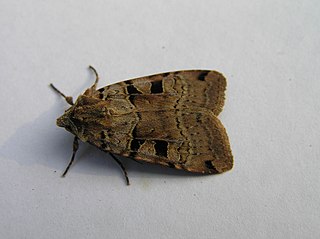
The double square-spot is a moth of the family Noctuidae. It is distributed through most of Europe except Portugal, the Mediterranean islands and northernmost Fennoscandia. In the East, the species ranges East across the Palearctic to Siberia and in the South-East to the Black Sea and in Iran. It rises to a height of about 2,000 metres (6,600 ft) in the Alps.

Argyrotaenia ljungiana is a moth of the family Tortricidae. It is found in Europe.
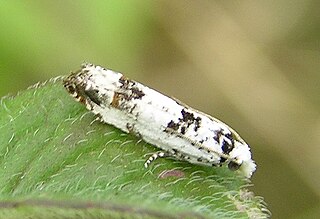
Eucosma campoliliana is a moth of the family Tortricidae. It is found in Europe, China, Japan and Russia.
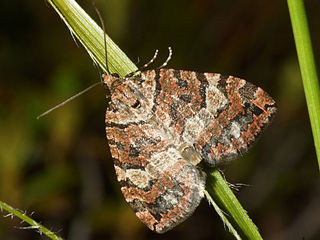
Hydriomena furcata, the July highflyer, is a moth of the family Geometridae. The species was first described by Carl Peter Thunberg in 1784. It is found in the Holarctic ecozone.

Diarsia brunnea, the purple clay, is a moth of the family Noctuidae. The species was first described by Michael Denis and Ignaz Schiffermüller in 1775. It is found in most of Europe, east to Transcaucasia, the Caucasus, central Asia, Siberia, the Kuriles, Amur, Ussuri, Sakhalin, Korea, Japan, and China, including China’s Tibet region.
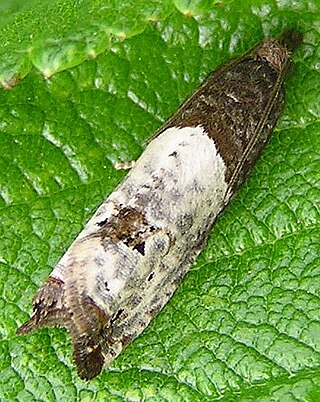
Notocelia roborana is a moth of the family Tortricidae. It is found from Europe to eastern Russia. It is also found in Asia Minor, Iran, Mongolia and China (Xinjiang).
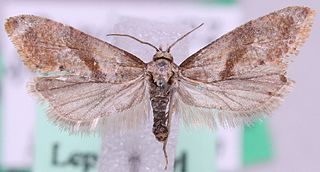
Falseuncaria is a genus of moths belonging to the family Tortricidae.

Endothenia quadrimaculana is a moth of the family Tortricidae. It is found from northern and central Europe to Siberia and south-eastern Russia, Mongolia and China. Subspecies nubilana is found in North America.

Eupoecilia angustana is a moth of the family Tortricidae. It is found in most of Europe to the southern part of the Urals, and across the Palearctic to China, Japan and Korea.

Olindia schumacherana, also known as the white-barred tortrix, is a moth of the family Tortricidae found in most of Europe. The moth was first described by the Danish zoologist, Johan Christian Fabricius in 1787.

Pandemis corylana, the chequered fruit-tree tortrix, hazel tortrix moth, filbert tortricid or barred fruit tree moth, is a moth of the family Tortricidae. It is found from northern and central Europe to Siberia, Korea and Japan.

Tortricodes alternella is a species of moth of the family Tortricidae. It is found in most of Europe, except most of the Balkan Peninsula.
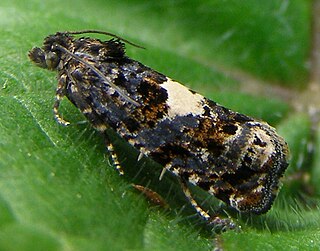
Epiblema cirsiana, the knapweed bell, is a species of moth of the family Tortricidae. It is found in Great Britain, Fennoscandia, northern Russia, Estonia, Latvia, Denmark, Germany, the Netherlands, the Czech Republic, Slovakia and Romania.

Cochylichroa atricapitana, the black-headed conch, is a moth of the family Tortricidae. It is found in China (Xinjiang) and the eastern Palearctic and most of Europe.
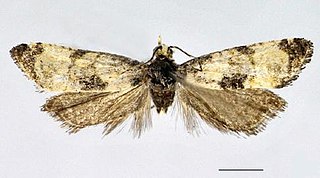
Cochylis dubitana, the little conch, is a moth of the family Tortricidae. It is found in China (Heilongjiang) and most of Europe. and the Caucasus. It is also found in North America, where it has been recorded from Colorado, Maine, Ontario and Washington.

Falseuncaria degreyana, the Breckland conch, is a species of moth of the family Tortricidae. It is found in China (Xinjiang), Mongolia, Russia and most of Europe. The habitat consists of meadows, rural areas, waysides, heathlands, moorlands and farmland.

Phtheochroa inopiana, the plain conch, is a species of moth of the family Tortricidae. It is found in China, Iran, Japan, Mongolia, Russia and most of Europe. It has also been recorded in North America. The habitat consists of damp areas and woodland edges.

Eucosma cana, the hoary bell, is a species of moth of the family Tortricidae.

Thiodia citrana, the lemon bell, is a species of moth of the family Tortricidae. It is found in China, Japan, Iran, Asia Minor, Turkmenistan, Russia, Kazakhstan, North Africa and Europe. The habitat consists of rough grasslands and dry pastures.

Grapholita lunulana is a moth belonging to the family Tortricidae. The species was first described by Michael Denis and Ignaz Schiffermüller in 1775.



















